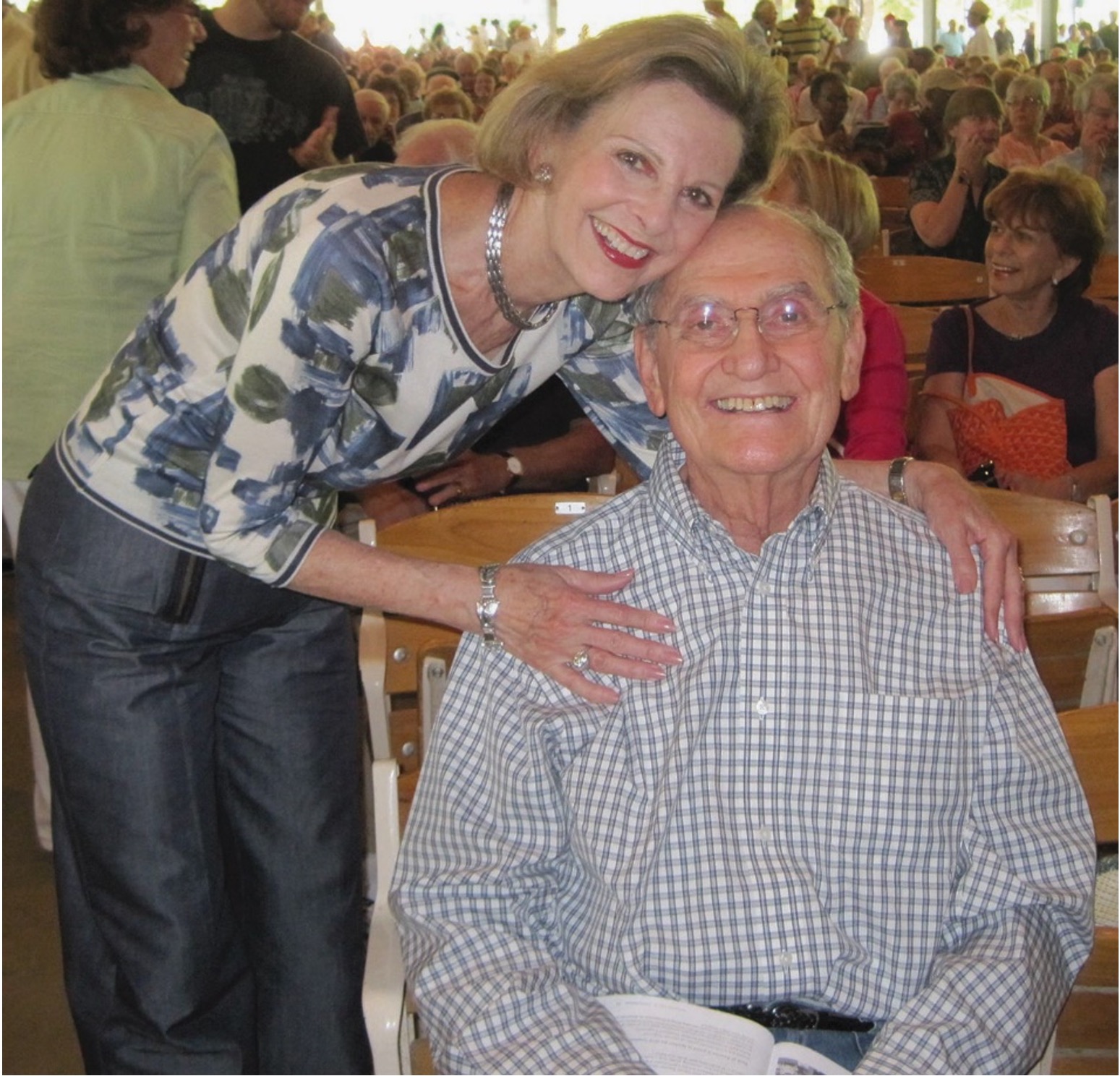Helene – a mother, wife, and author – was a family caregiver to her husband Adolph (Ady) after his diagnosis with Alzheimer’s in 2005. At that time, Ady was 75 and Helene was 70. Ady passed away in 2011, and after the experience of caregiving, Helene wrote her book, which was published in 2019. We had the chance to learn more about Helene and her book. Read her story below.
HELENE’S STORY
At now age 87, I look back on my life and acknowledge how supremely fortunate I have been.
I had a good marriage to a kind, gentle, bright, ethical and loving man who encouraged me to do or become what I wanted to be. I spent a lifetime of communal work bringing out the best in others and speaking throughout the country as the chair of several national organizations. I realize now that the skills I learned in those capacities were simply more arrows in my quiver. I used all that training to help my husband maintain his dignity and feel respected. He constantly received kindness, patience to the best of my ability, complete honesty and most important, love. He thrived on this diet of support. I have an accomplished son and daughter and 4 grandchildren who hopefully will make their contributions to the world.
Before I touch on the amazing CHOOSING JOY outcome, I must offer an essential caveat: The book is about a rare success story for an Alzheimer’s patient. I, in no way, wish to imply that a caregiver who follows the course of action described throughout the book, will have similar success. Alzheimer’s affects different parts of the brain in different ways. The symptoms vary with the severity of the damage. My heart goes out to the thousands of patients and families who face this painful tragedy for years. Countless deeply caring spouses and children have given love and devotion beyond measure and still end up with a loved one who doesn’t recognize them, becomes angry and abusive, and even loses the capacity to speak. Regardless of the severity of the disease, I believe, the insights learned and the resulting methodology described throughout the book, has the potential to lessen the negative emotions of the your loved one making for a more content and less difficult patient. Equally important, both patient and caregiver are more likely to thrive in non-confrontational and supportive environment — especially if introduced before unwanted behavior becomes habit.
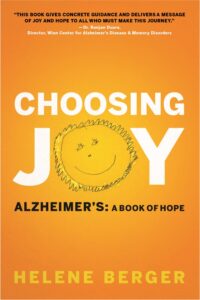
THE ESSENCE OF CHOOSING JOY:
None of us knows what lies ahead for us in life. As we look forward to a relaxed, enjoyable path after retirement, if your loved one is hit with 3 little words, “you have Alzheimer’s”, the world you each knew and hoped for, changes. Even if part of our brain is aware of your loved one’s decline (or we would not have sought a professional opinion) most of us are in total denial and not prepared for the verdict which confirms what we already knew. The concreteness of those three words banishes all hope. We feel like a rider who has just been knocked off his horse. We are simply not prepared. I certainly was not.
I’m about to tell you why I’ve sub-titled this “a Book of HOPE” by giving you a glimpse of the beginning and the end. A giant leap from the official diagnosis to six years later at the unexpected final night of his life.
Diagnosis:
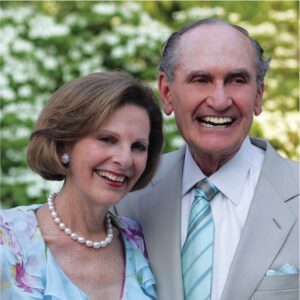
It was a few months after our fiftieth anniversary when seated in the office of the head of the Wein Center for Memory Disorder in Miami that we received the official diagnosis. Dr. Ranjan Duara looked at Ady and said the three fatal words: “You have Alzheimer’s”. No one spoke for several moments. Then Ady, in a calm, quiet, rational voice responded, “I don’t want to live anymore.”
Fast forward six years later:
We took seven couples of close friends out to dinner as a thank you for all their caring and calls. I didn’t tell Ady who was coming because I didn’t want him to get tense trying to remember the names. (He was in a wheelchair for the last 2 ½ years of his life after a broken hip in a fall.) Seated in his wheelchair as the quests arrived, he greeted each of the seventeen guests by name!!! Then, seated at the table, Ady at the head with his broad smile, raised his glass (water – he never drank) and (as a total surprise to me) made the most beautiful and articulate toast thanking our friends with appreciation for their attention, their calls, and looking after me. When the quests began to depart, two couples asked in the identical words, “Are you sure he has Alzheimer’s?”
In my wildest hopes, I never envisioned such a result was possible. During the first year, Ady followed the typical path: stubbornness, frustration, irritability, rigidity, annoyance (if not anger), and inappropriate behavior. His handwriting was so shaky that I could not read a telephone message he tried to leave. I watched in horror that first year as this beautiful man continued to decline. I was seized with a fierce determination to find ways to make our lives as fulfilling as possible, for as long as possible. I made a concrete decision, not to be passive as he was daily declining. I had to change myself in order to change the direction I was observing.
I enlisted all my creative energy to build a solid foundation of constant mental stimulation and emotional support.
This book chronicles how and why this positive change was possible.
The rare success story that unfolded offers strategies for finding joy in your day-to-day life with an Alzheimer’s patient. It is the personal journey of one unprepared woman, neither a doctor nor an expert, who lived through these years by creating positive ways to cope. It is the story of a wife who was determined to create a supportive environment for her husband — never dreaming the resiliency he ultimately displayed was possible. It chronicles my real-life experiences: the tears, the frustration, the uncertainty, the many mistakes, as well as the successes that enabled my husband to beat many of the odds of this dreaded disease. While not what any of us would choose to live through, it was enough for each of us to live with contentment and to know that the bond of love was sound. If anything, I truly believe that I loved him more during those final years as he never lost his expressions of love and concern for me and faced the changes in his life with extraordinary grace and courage.
As my attitude, encouragement, and skills changed, Ady again became known for his radiant smile and was able to do what was unthinkable in the early years: greeting friends by name; returning to the piano- slowly at first, but then an hour each day; learning a new game- sudoku. He began to initiated new rituals. The most delightful for me was his writing nightly love notes to me in a clear hand -often illustrated. I came out of my home office one night and found a note for me on the table at the front door. My praise was so over the top, that he continued that delightful habit each night for the rest of his life.
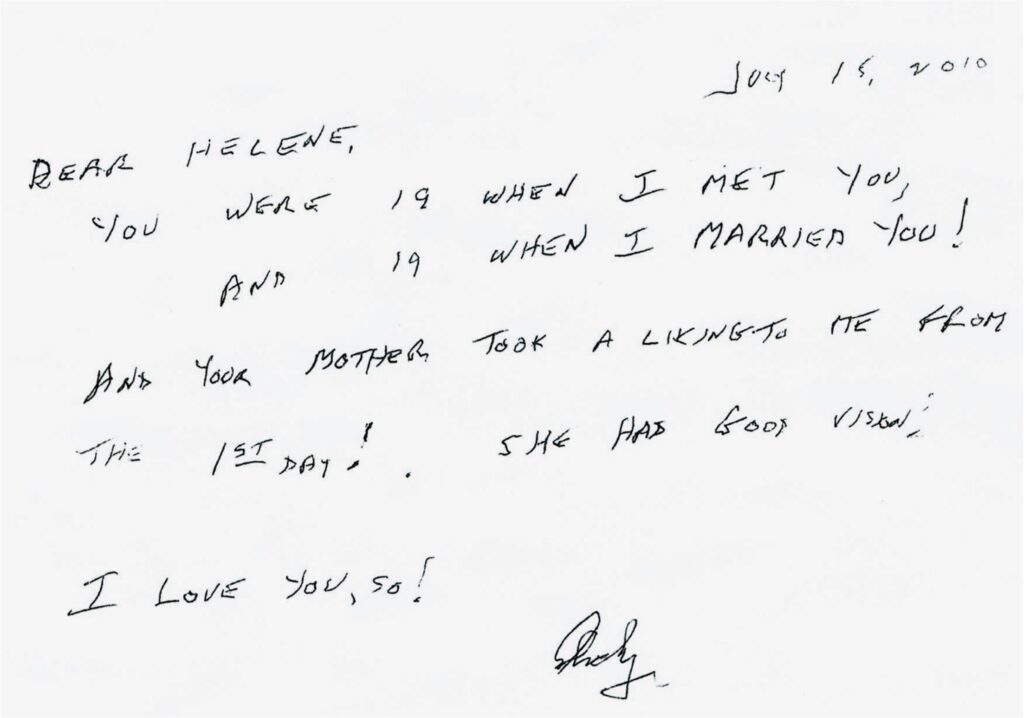
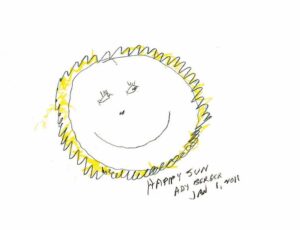
Many activities were initiated by me. One night after dinner, I put a drawing pad and colored pens, markers and crayons in front of him. I don’t think he even drew a picture in nursery school. He looked at me in shock. “What is this?” I said, “Draw something”. Ady: “What?”. Me: “Whatever makes you happy”. He picked up the markers and began. I have hundreds of his drawings that he drew every night. At first the drawings were quite primitive and then more detailed. His whimsical drawings all have one thing in common. They each express boundless JOY. No depressed person could create the pictures he drew. He was so proud that he signed and dated each and occasionally added a title. Three months before he passed away, he drew a huge smiley face with twinkling eyes surrounded by a bright yellow wavy boarder and titled it “HAPPY SUN”. That drawing became the “O” in the cover. Choosing JOY.
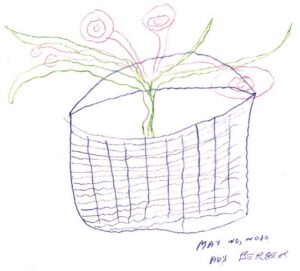
Choosing Joy gives concrete examples of how together we created an atmosphere that made positive change possible. I took copious notes, not for a book, but for myself, recording what worked and what did not. I never dreamed of writing a book. But through the years after his passing, friends kept coming to me for guidance after having witnessed the transformation in Ady. So, years later I gathered my notes and realized that I had many important thoughts that I could impart to others to help them during any traumatic time.
Choosing Joy became a comprehensive account of what I learned through trial and error, through questioning everyone I met, through intensely observing my husband. Gradually, I began a process that was deeply important. (Though I didn’t recognize it until writing the book.) Every time I found something that worked, instead of applying it to that one situation, I tried to look for the general principle that I could apply in other situations. What is the philosophy? Why did this work? Could it apply it to something else? In the book that evolved, I tell a story of what worked and then delineate the general principle behind it which might apply to many different situations.
Examples: the difference between “Not Now verses Never”, “Question verses Command”, “Avoiding confrontation”, and a host of other crucial insights with examples.
Following is a brief portion of a chapter illustrating this approach:
Story followed by message:
I began to understand that I could not change his behavior, but I could change my own. After fifty years of marriage, I was sensitive to his every mood and he to mine. Slowly, I began to observe how my own actions contributed to his frustration and loss of dignity.
One of the most universally known Alzheimer’s symptoms is that the patient asks the same question over and over again, forgetting the answer a few minutes later. Early on, when Ady asked, “Where are you going tonight?” the first time I responded sweetly. “Dear, I’m going to the ballet with Elaine.” By the fifth time, I did what I suspect everyone does. I responded with a tiny intake of breath, or a raised eyebrow, or closing my eyes, or with some other nonverbal expression that implied, “I’ve told you that a hundred times.”
I then spoke as calmly as I could. “I’m going with Elaine to the ballet.” The words themselves were fine, but the damage had been done in an instant. My nonverbal response could not be undone. My initial raised eyebrow was like a punch in the gut. Ady felt diminished and disappointed in himself.
Watching this reaction, I was determined not to respond ever again with even a hint of annoyance. When frustration crept in, as it is bound to, I gave myself a Mantra:
He would not be asking if he remembered.
That one simple thought helped me react with compassion and tenderness rather than with frustration and annoyance. I learned to respond for the eighth time with the same love and kindness as I had the first: “Sweetie, I’m going to the ballet with Elaine,” often giving Ady a loving pat on the cheek or taking his hand. It was one of the most difficult decisions for me to carry out. But the results were so reinforcing and his response was always loving and appreciative that it became easier with time.
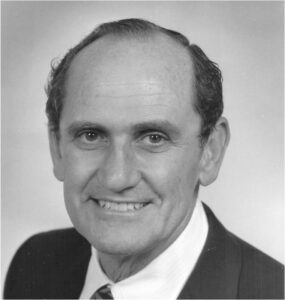
I know with certainty thathe never felt alone. He had complete trust in me -built over a lifetime but reinforced by knowing that I always gave him the truth, even when critical. And we worked out solutions together – never imposed. He knew that we were team, that I was there to support him in any way I could. And he continuously encouraged me to live as fully as possible -to go out go out for a walk or a game of tennis or even to accept an occasional dinner invitation when he preferred to stay at home. It was not until writing this book that I began to understand how difficult it was. I was too full of the wonder of his progress to feel down and depressed.
LIFE LESSONS:
- None of us knows what we’re capable of doing until we do it.
- This is a journey that was not in our life’s plan, but we cannot move on without ACCEPTING the reality.
- The attitude we convey to our loved one can and does make a difference
- The only capacity we truly have control over is our attitude.
The more we bring our own impatience and frustration to our loved one, the faster he will decline.
The more we can give kindness, compassion, patience and support, the more our loved one (and we) will thrive.
- I learned of the importance of keeping a journal (although mine was a scattered one on blank pages of a concert program or waiting in a doctor’s office.) Eventually, I learned, even before the thought of a book grew, to take one of those tiny moleskin blank pads with me in case I had a thought or an insight. I usually did.
- One cannot give of themselves without taking care of themselves. There is an entire chapter in the book called, “Giving Yourself What You Need”. It is an impossible job 24 hours a day. I had no extra help for the first 3 ½ years but my excellent housekeeper who adored Ady and was there for me so I could get out on the days she was in for that life-giving game of tennis or a rare night with friends. After Ady fractured his hip, I needed extra help in the day but never wanted it at night.
- The importance of friends and keeping up your relationships. An adult conversation goes a long way to remember who you are.
- I made a conscious effort to create sweet times. One was singing in the car on the way to a doctor’s appointment the many songs and the lyrics he remembered.
- Keeping your loved one’s mind active in many creative ways is of prime importance. Keep that television set far away except for a brief designated time after dinner.
- We’ve all heard the words, “Fight the disease, Not the journey”. What emerged for me was a slight twist: Fight the disease, EMBRACE the Journey”. Embrace means trying every moment to remember the love of past years, and not trashing it with frustration, impatience and bitterness. It means having compassion for what your loved one is going through and empathy for their fears or loss of dignity.
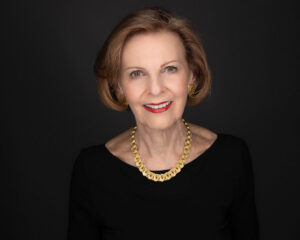
The guidance given throughout the book is not simply for an Alzheimer’s patient, but far more universal. It is how we respond to anyone who is declining in any way. And what I happily learned from my readers, is the examples apply to all the people in our lives that we care about. Written comments received: “I’ve been happily married for 22 years and I’m speaking differently to my husband after reading your book.” “Your book taught me how to be a better wife”. I find that after writing CHOOSING JOY, I, too. am speaking differently even to my adult children and grandchildren. The concepts express throughout the book are universal.
I hope after this brief introduction, your curiosity will be peaked enough to read the book.
Please go to www.HeleneBerger.com (especially to the speaking and event tab) to learn more that will make life richer for you or a friend or loved one.
Wishing you well on your journey.
Conclusion
Thank you to Helene Berger for sharing her caregiving journey with us and giving us a peek into Choosing Joy. If you are a family caregiver, click here to find your local CRC to connect with resources today!
Share this post: